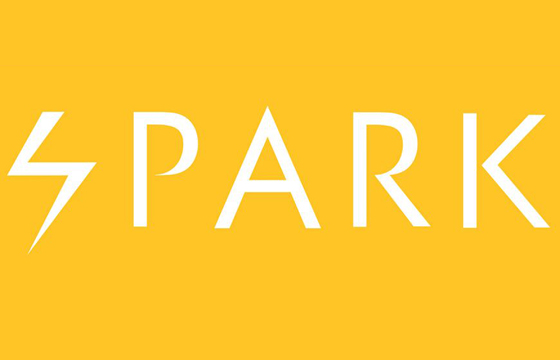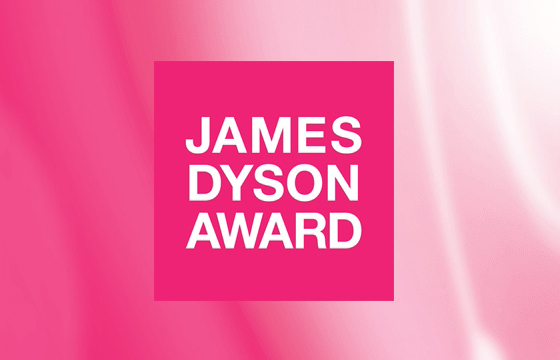The Girl Effect Studio
- Global Health
- Social Entrepreneurship

Fall 2014
In the fall of 2014, Designmatters and the Product Design Department collaborated with the Nike Foundation, Yale School of Management and fuseproject with the challenge of empowering and getting resources into the hands of adolescent girls living in poverty around the world. Student teams on both coasts built on existing everyday practices and developed social impact design ideas for income-generating and time-saving tools and techniques that are widely accessible, radically affordable and can be used intuitively by girls in diverse cultures all over the world.
About
The “Girl Effect” Studio
In this innovative studio, ArtCenter’s commitment to global social and economic justice was inspired by and dovetails with the Nike Foundation’s belief that adolescent girls can play a crucial role in solving the toughest problems facing the world. When a girl living in poverty has the chance to reach her full potential, she isn’t the only one who escapes the circumstances she was born into. She brings her family, community and country with her. This is called the Girl Effect.
Too often the reality for a girl in poverty is a life of limited education, unending household responsibilities and unfulfilling income-generating work to help support her family. However, research has shown that when an adolescent girl in poverty is able to stay in school, delay marriage and delay having children, not only do her life chances radically change, but the children she will later have are far more likely to be healthy and educated.
The ‘Girl Effect’ Studio represents a groundbreaking international challenge that builds on the pioneering efforts of the Girl Effect movement, created in 2008 by the Nike Foundation in partnership with the NoVo Foundation, United Nations Foundation and the Coalition for Adolescent Girls.
The Nike Foundation has played an important role in the international development community, where the plight of adolescent girls is receiving increasing attention as attested by the 2009 World Economic Forum and initiatives from the World Bank and the Clinton Global Initiative among others.

The Girl Effect collaboration with Art Center and Nike Foundation offered our students a unique opportunity to immerse themselves in a kind of thinking and work that is not common in business school. Fundamentally, the project was about creating THINGS, real tangible products. This is a departure from our usual fare of business plans, financial models and marketing strategies, although clearly these all played important roles in the joint work. The Yale contribution of developing viable business models for getting the THINGS to their intended users (the Girls) pushed the students’ thinking into new spheres where the imaginative and the tangible had to be wed. Our students greatly valued the opportunity to engage so deeply with such a creative group of design students, on a project of such pressing importance.
– Tony Sheldon, Faculty, Yale School of Management
Background
An estimated 250 million adolescent girls live in poverty worldwide. Many of these girls are responsible for labor-intensive household chores; their economic independence and human potential is often greatly constrained by complex and interrelated cultural and socio-economic factors such as limited access to education, child marriage and teen pregnancy.
The ‘Girl Effect’ Studio challenged student teams to envision and develop an ecosystem of access to tools, products, and services, “an ecosystem of access to things,” with integrated scalable and sustainable business models and strategies. Inspired by the Girl Effect – the unique potential of adolescent girls to end poverty for themselves and the world – the focus of the studio was to create innovative, affordable and accessible physical assets that are currently not available to girls living in poverty. As part of their design research and conceptual development process, students explored many “A Day in the Life” scenarios and considered the current tools girls use daily for sewing, mending, cooking, cleaning, fetching water and firewood, as well as other tasks.
The teams were faced with the overall project goal of generating new time-saving tools and practices that could create potential income opportunities that girls could easily learn, acquire and leverage.

Partners and Planning
The ‘Girl Effect’ Studio builds on the Nike Foundation’s vision of the power and potential of girls around the world and brings together Art Center’s Designmatters and Product Design Departments, Yale School of Management (SOM) and fuseproject, an award-winning, San Francisco-based, industrial design and branding firm founded by Art Center alumnus Yves Behar.
With its humanitarian and global themes, the studio appealed to a wide variety of Art Center students majoring in product, photography, advertising, environmental design, industrial design and illustration.
Art Center students were teamed with MBA students from Yale School of Management’s Design and Innovation Club who offered concurrent strategic integration to the proposed design concepts during the ideation, development and making phases of the studio.
This unique and collaborative pairing informed the design students’ understanding of the rationale behind developing viable business models; meanwhile it also allowed their business counterparts to gain a deeper understanding of the iterative ideation and prototyping design processes necessary to bringing new products and services to life.
Since the students were unable to perform hands-on fieldwork due to the studio’s global scope, the Nike Foundation and fuseproject provided initial detailed research and framework, allowing students to explore verticals and cross them with human benefits to create advantageous global strategies and prototypes.
Overall, working long-distance with multiple teams through current technological avenues and leveraging pre-established research provided students with practical experience on the current state of design where designers interface daily with transdisciplinary teams to develop concepts and strategies from different geographies.
The students’ questions to the fuseproject team started with the obvious ones, but quickly evolved to more nuanced and detailed questions, and then expanded to understanding the girl’s experience as a whole. What would it take to get the product to girls? What would make it functional AND appealing? What is the overall benefit, so it’s not just the object for the object’s sake? How does it fit into the bigger picture of unleashing the Girl Effect? We’re so impressed with how far they took it and how broad their thinking was. They didn’t settle for the obvious answers, which resulted in some seriously unique solutions.
– Andrea Small, fuseproject
Research and Project Development
Student teams on both coasts built their concepts relying on rigorous secondary, and sometimes primary research and expert guest informants. They grounded design ideation on existing everyday practices in order to propose social impact design solutions that are characterized by radical affordability, accessibility and scalability across diverse cultural contexts.
Initially, students needed to discover as much as possible about the reality of living in poverty without the benefit of first-hand knowledge, research trips or face to face inquiries with specific communities.
These constraints required research and data collection outside the classroom as well as utilizing the knowledge of instructors, numerous guest speakers, appropriate case studies, online resources and local proxies who could serve as research subjects. In many cases, students contacted current experts in the field for supplemental in-depth questions and advice.
A team from fuseproject presented their field experience with the Nike Foundation in Rwanda to the students and were available to answer questions, provide context and offer specific insights and feedback throughout the course.
Each team developed a Value Criteria of how their product would improve the lives of young girls, and that criteria guided their decisions, business model, product design and direction.
Beginning with one product concept, student teams investigated different elements (technology, manufacturing, use, distribution, etc.) to imagine the multiple ways the product could exist. From there, students built a case to suggest a product/solution that would best fit their Value Criteria, business model and ultimate customer.
For the first half of the curriculum instructors fashioned multiple assignments involving hands-on prototypes that gave students a richer understanding into an item’s functionality, affordability, ergonomic design, and accessibility. These assignments spurred student thinking, refocusing their vision of how their typical tools/materials could be dramatically transformed into a new purpose and/or toolkit.
While students were given specific demographic regions (rural, peri-urban and urban) for their projects, the universality of the design was top priority.
Students charted the landscape and users’ experience, including a step-by-step process of “How Can We Make This Better?”
Another challenge for this phase focused heavily on a business perspective, which presented another layer of research for student teams. Design students established regular contact with their Yale counterparts via Skype, email and other communications channels to craft a viable business plan for their product.
After receiving feedback on mid term presentations from faculty and studio partners, teams delved into diagramming systems and details of manufacture, financing, price points, potential distribution centers, sales, marketing and roll-out plans. These discoveries further fueled design updates and refinement, providing a richer sense of the overall process of what is takes to bring a conceptual model to fruition.
Throughout the entire process, student teams needed to fold in and consider the overall Girl Effect in their thinking in terms of messaging, design strategies, consumer/advocate/supporter roles and how their product/systems would complement and reinforce project ideals.
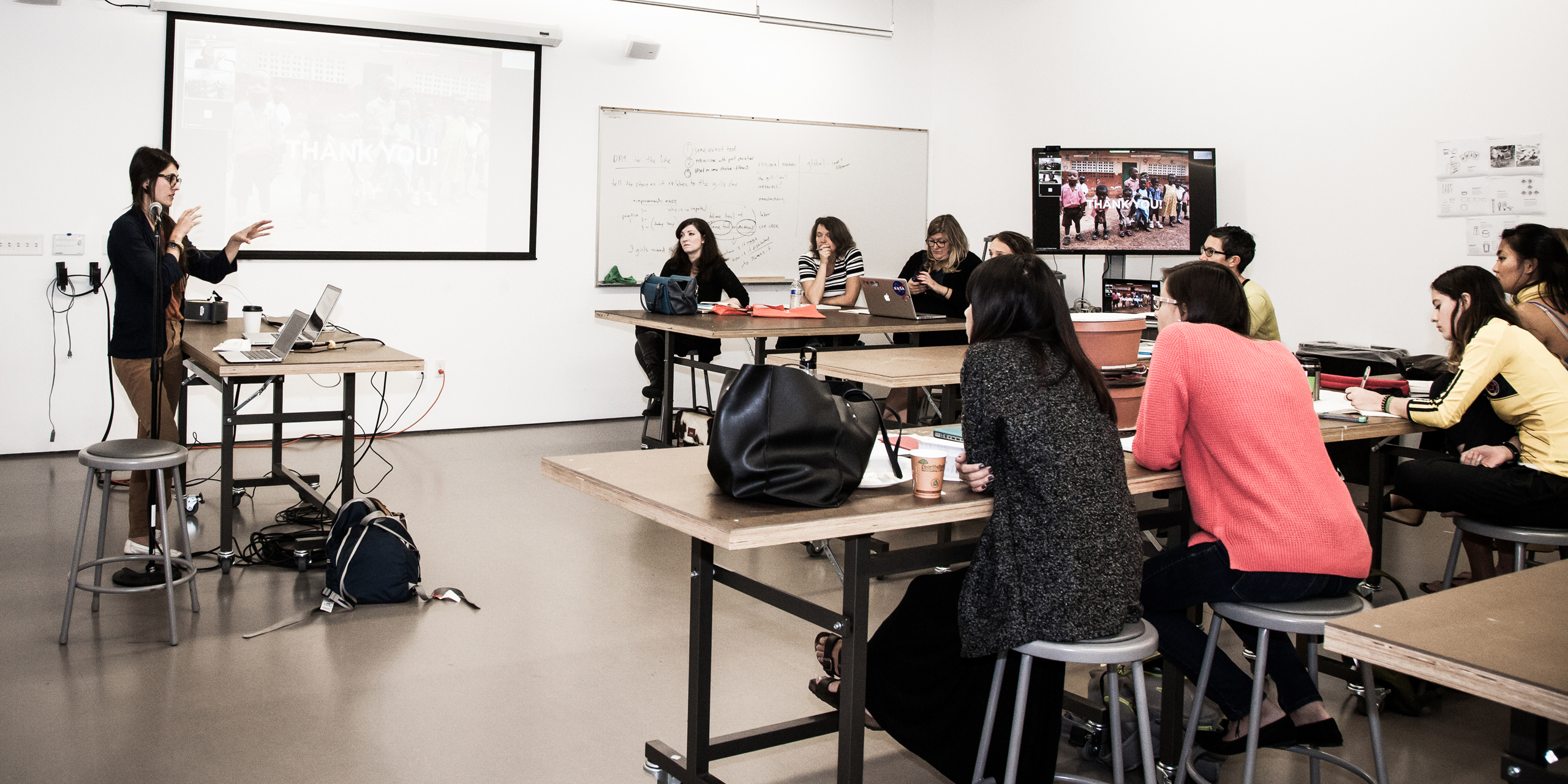
As a current design student with a MBA, this studio gave me a platform to merge two skills sets into one application. I was able to wear both my hats in the project. I’m very interested in social entrepreneurship and design solutions that are realistic. If you were your own boss how would you make this work? What benefits would you gain from bringing in other partners and using other resources? This class is a catalyst for me to put into action what I am passionate about.
– Mariana Somma, Student, Graduate Industrial Design
Project Outcomes
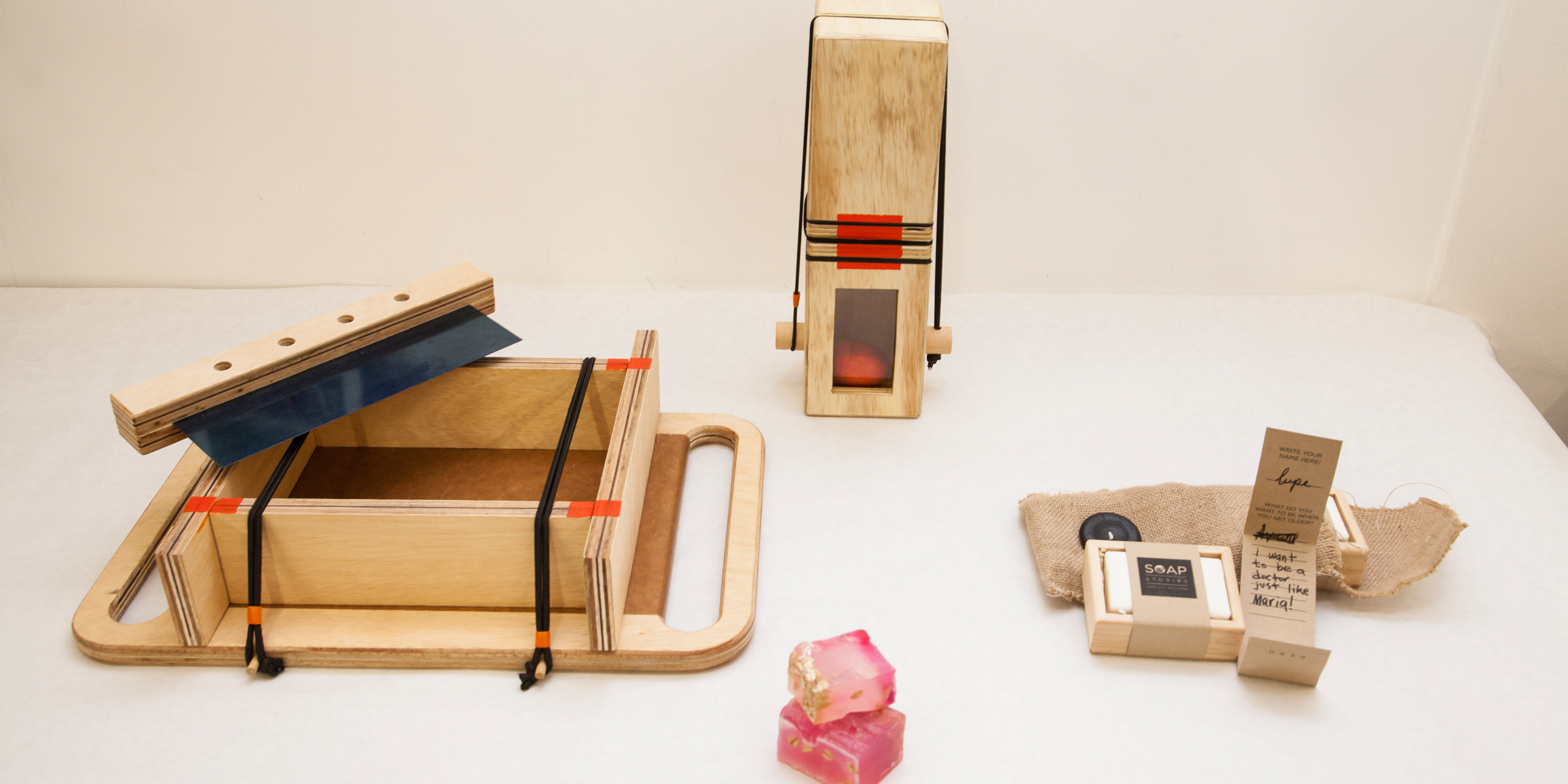 close
close
The Soap Project – Soap-Making Collective Workshops
Read moreBrittney Au, Daniel Bromberg, Connie Chuy, Emily Harris, Tiffany Morri
Young girls team up with older mentors to create soap bars using affordable tools that encourage cooperation, creativity and income-generation centered on basic hygiene needs. To bypass the inherent dangers of soap making, this collective engages the youngest girls to gather ash and water (lye) from their home fires via a safely constructed lye collector. Lye is brought to the workshops where older girls continue the process using a molding board to form and create the finished bars of soap. Distribution of the final soap product would start locally and spread. The collective would collaborate initially with one of the many agencies that currently offer adolescent-focused workshops, but the goal is to make the co-ops self-sustaining by passing down knowledge from older to younger girls.
 close
close
Bahu – Multipurpose Food Prep Tool
Read moreDaniela Cardona, Marie Nguyen, Joan Kim, Joyce Lin
Preparing meals often monopolizes a young girl’s waking day and limits her school attendance, social interactions and potential value in the community. Often a girl has only one large knife in her possession, likely passed down from older generations. The multifaceted Bahu food prep tool streamlines the cutting, peeling, crushing and rolling process into one curved-shaped tool (with a built-in sharpener) that is ergonomically designed for a young girl’s hands. Bahu would be crafted from stainless steel and G10 plastic; it would first be marketed in the United States to jumpstart sales. This initial revenue would later subsidize the overseas costs, making the tool affordable. Mothers are the target buyer for the tool who would give it to their daughters as a special gift.
 close
close
Mosaic – Secondary Education Through Woven Crafts
Read moreKathy Tieu, Shiva Farrokhi, Diana Jones, Joan Kim, Joyce Lin
The Mosaic program encourages girls to continue their secondary education through a crafts collective where their creativity and artistry is valued along with their schooling. Using a small hand-held loom, girls weave a square patch composed of local materials. Patches are delivered to schools for credit, enabling the girls to continue their education. Girls also receive a story card that reinforces the importance of education that also acts as a reward for finished patches. Patches are combined to create various items that are ultimately sold at local markets and eventually through overseas fair-market trade associations. NGOs would oversee the program to make sure that revenue collected from sales would finance the girls’ education. Transparency is a must to overcome any child labor infringements.
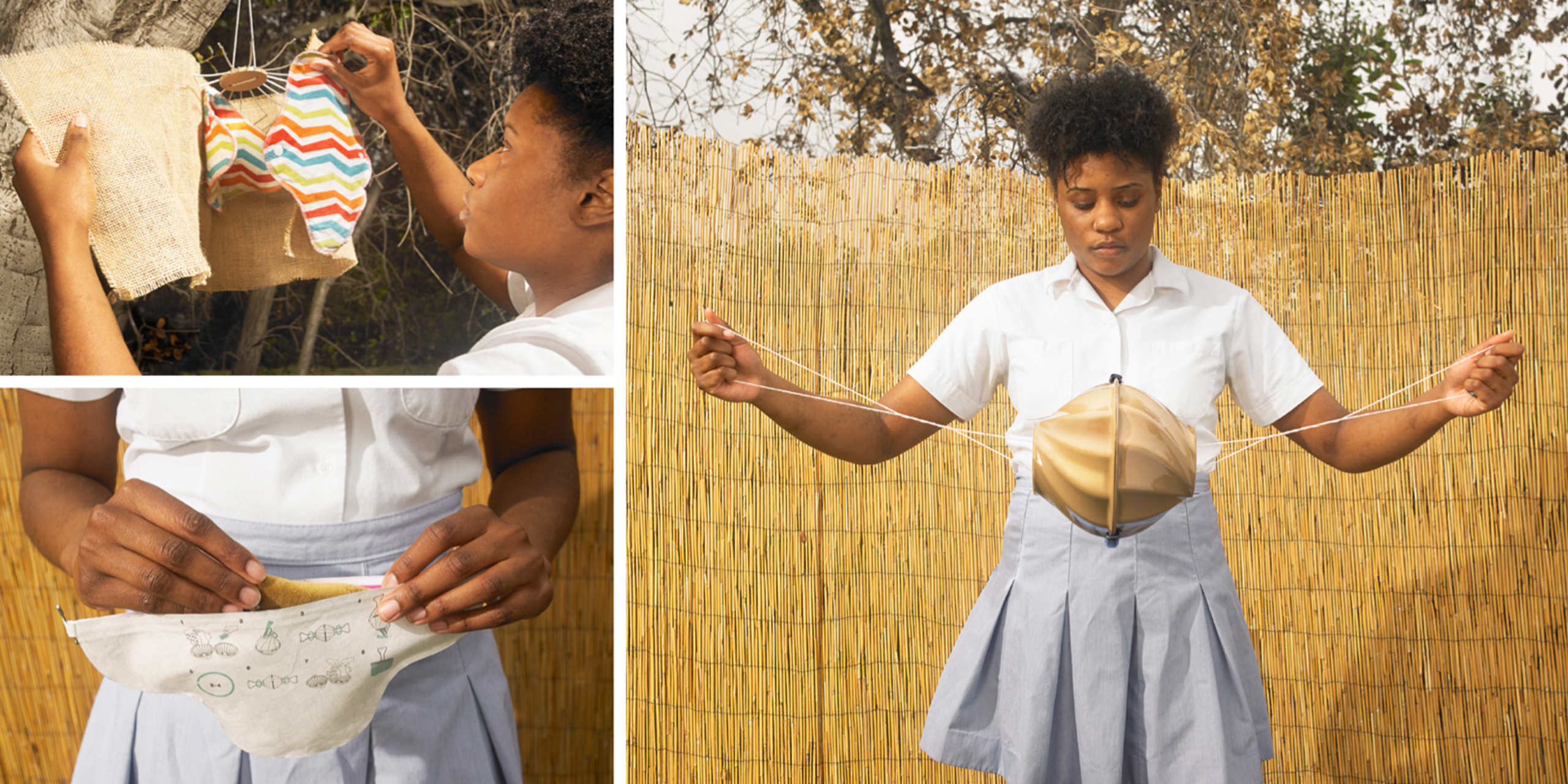 close
close
Flo – Wash, Dry and Carry Toolkit for Sanitary Pads
Read moreSohyun Kim, Tatijana Vasily, Mariko Iwai, Charlotte Wong, Ben Freedman
Menstrual cycles often results in girls missing school, infection, illness and isolation. With disposal pads too costly, the Flo kit presents an inexpensive system for cleaning, drying and carrying reusable menstrual pads so girls can feel confident and in control. When away from home, a girl wears lightweight carrying pouch under her garments where new and used pads can be comfortably hidden. Back at home girls privately clean used pads with the affordable and small-sized washer/dryer unit. This hand-operated device uses opposing forces and small amounts of water to clean and spin dry; it could be created out of found objects or purchased as a final product. Key potential business partners would be Tyvek for carrying pouches and Rubbermaid for producing the washing design and deliver through their distribution channels.
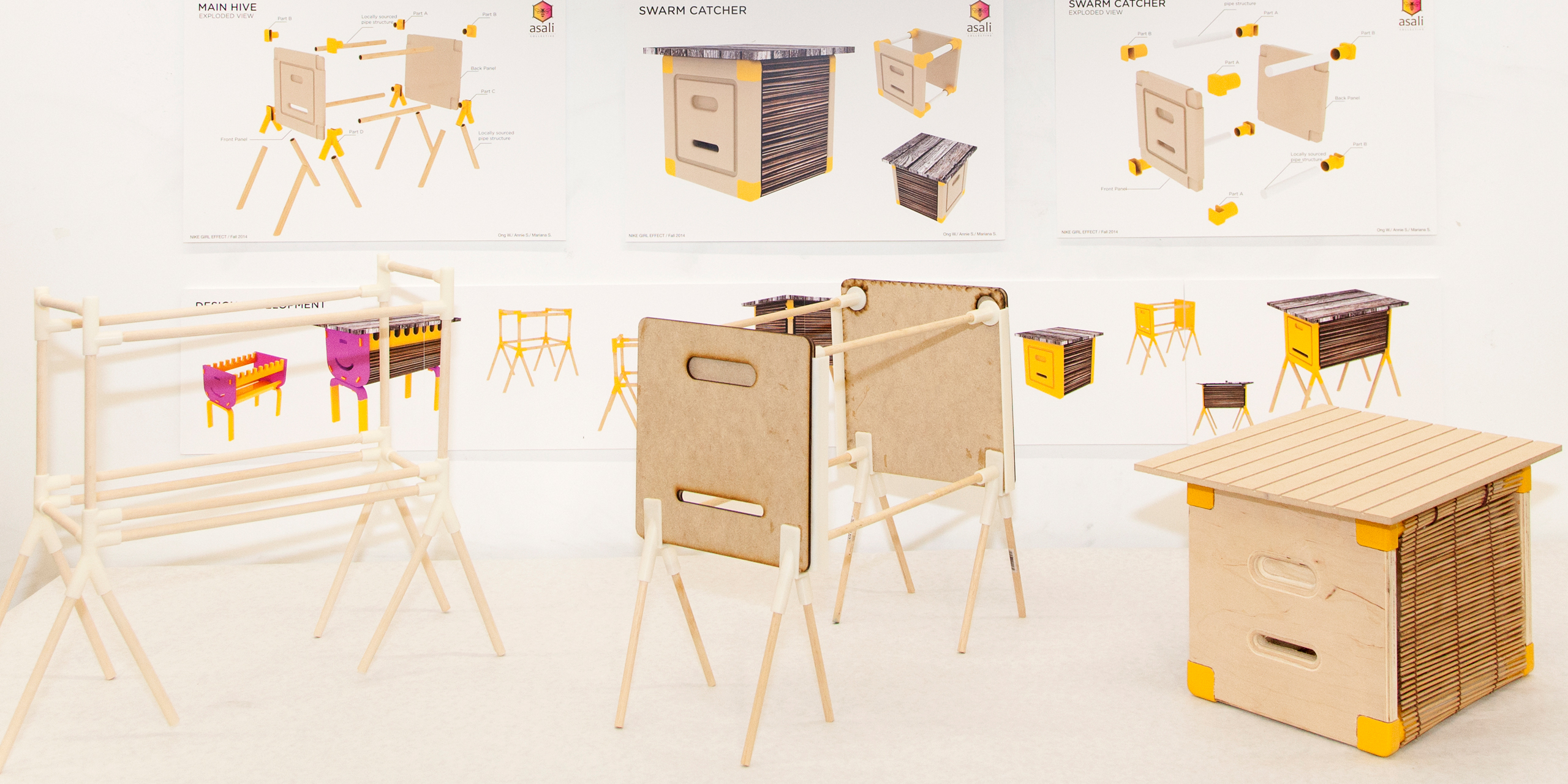 close
close
Asali Collective – Beekeeping Cooperative
Read moreAnnie Shin, Mariana Somma, Ong Wongnawa, Rebecca Blum, Laura Onelio
This beekeeping cooperative employs an environmentally responsible method of income generation to teach young girls the value of cooperation, friendship and mentorship. The collective brings together girls of all ages; girls transition to new responsibilities in caring for the hives as they get older. The collective features a unique hive design that is attractive to girls and created out of easy-to-assemble injected molded plastic and local materials. The smaller-than-typical swarm catcher is portable, lightweight and is ergonomically designed for young girls. Financed by charitable organizations and donations, the collectives will earn credits for sales and eventually pay back the start-up costs for the tools/materials making them self-sustaining. After short term markets have been saturated, the collectives could form partnerships with global distributors.
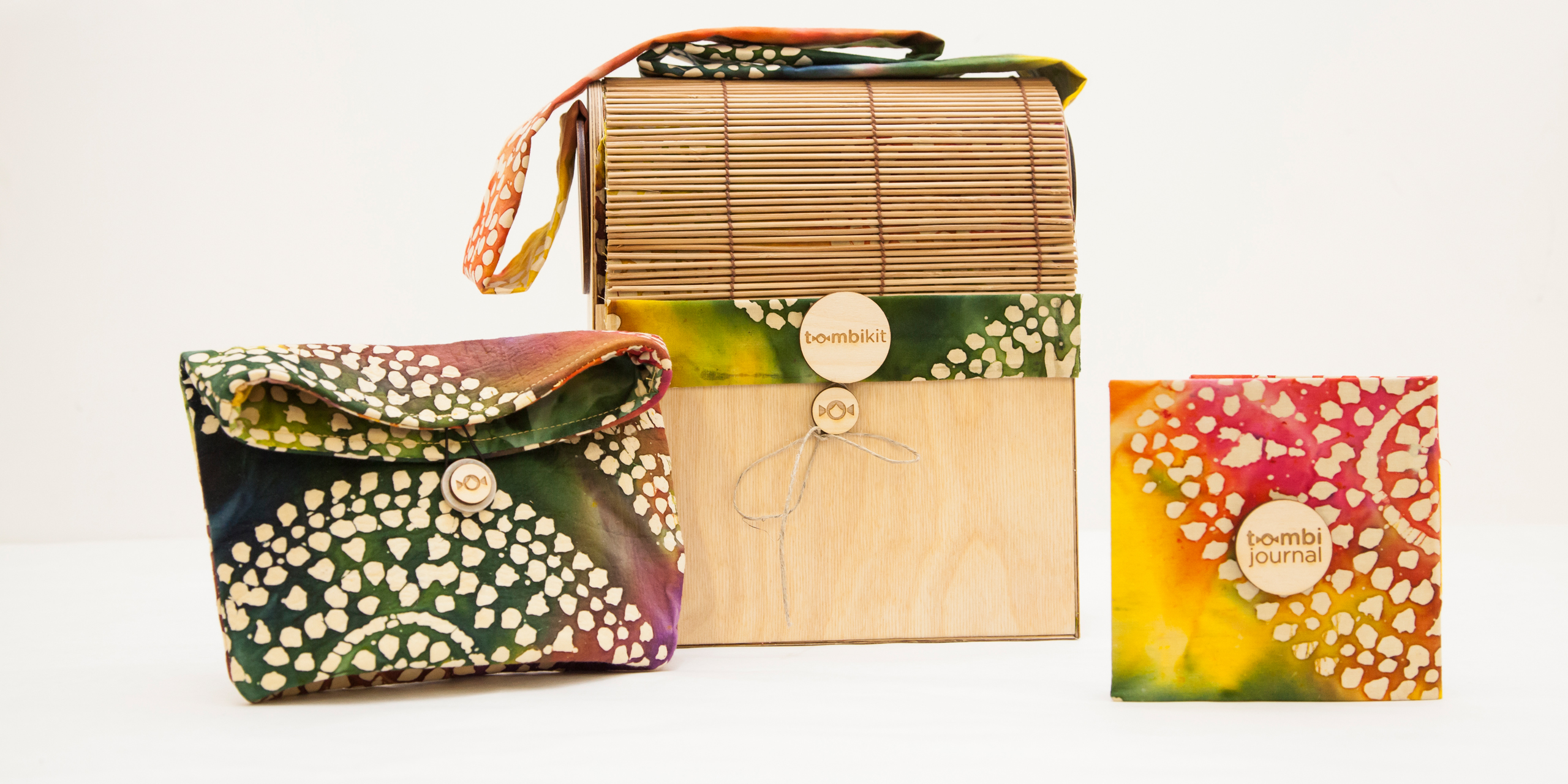 close
close
Tombi Kit – Pre-Menstruation Kit
Read moreAndrea Cappelli, Kei Yumino, Thokozani Mabena, Mona Gabaizadeh, Ali Joseph, Eric Rucker, Kendrick Strauch
With a lack of knowledge, privacy and resources, young girls often avoid school during their menstruation cycle, which could lead to educational setbacks. Engaging girls before they start puberty, the Tombi kit would answer questions, alleviate fears and provide tools for girls to discreetly take care of themselves. The kit’s carrying container includes: a journal (with picture prompts, a calendar and blank pages), sustainable menstrual pads, and a smaller travel bag (with pouched area for used pads). The kit would be locally manufactured and assembled, featuring familiar cultural fabric. Ambassadors would distribute the kit, provide educational sessions and be the source for refilling the kit. The business model calls for a small pilot project using crowdfunding sources in order to observe all facets from distribution to implementation.
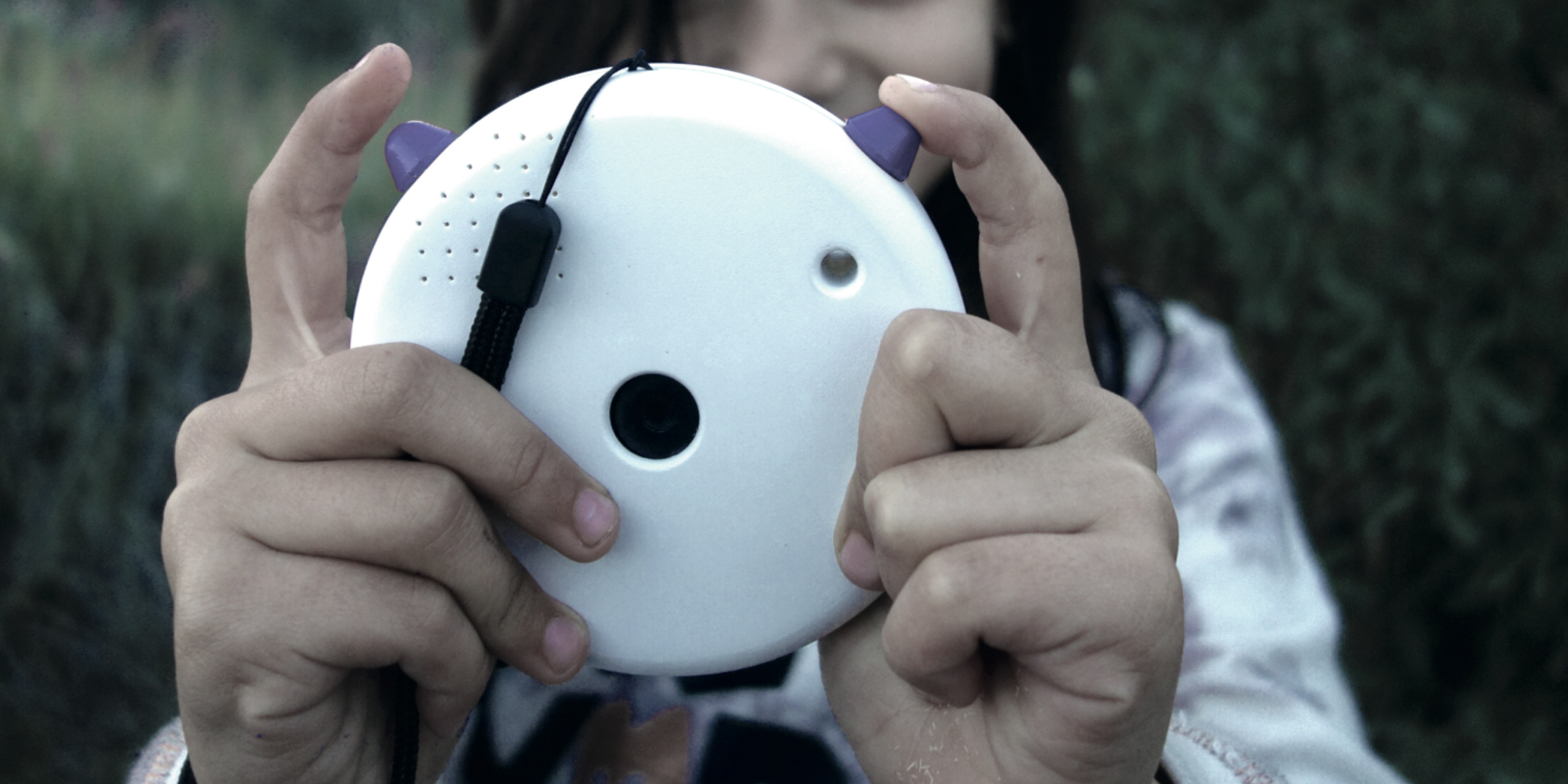 close
close
Girl Sight – Camera and Photographic Research
Read moreLori Nishikawa, Carolina Rodriguez, Therese Swanepoel, Ben Freedman, Charlotte Wong
Since girls in poverty are the best voices to tell others what girls in poverty need, this affordable camera offers girls an outlet to express themselves and document their lives in a creative manner; the uploaded images are also valuable resources for social service and humanitarian organizations that need unadulterated research and direct insight to best plan and design effective programs.
Schools monitor the curriculum to teach girls how to assemble and critically use their cameras. Photos would be shared on a website that is accessed by donors, researchers and girls around the world, including those in Western schools.
Camera financing would come from private donors and U.S. government subsidies; roll-out would start with a target area and grow wider to universally connect girls in poverty with the outside world.
The designers were so resilient week after week, which was especially impressive when critiques led to their having to start over from scratch. Using more technologically dynamic (and in many ways, more casual) means to communicate took a little getting used to. No matter what the means, this experience confirmed that communication and collaboration ultimately comes down to people. Our meetings worked best when everyone involved was (physically and mentally) present and enthusiastic, when the whole team had a clear sense of what hurdles we had to tackle next, and when both coasts kept team decisions in mind when facing design or business-centric crossroads.
– Joan Kim, Student, Yale School of Management
Unleashing the Girl Effect
-
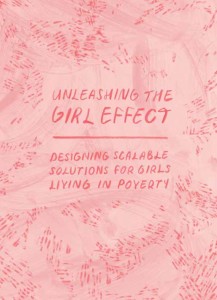
-
Unleashing the Girl Effect
A volume documenting the challenge to design accessible, affordable, life-improving tools for girls in diverse cultures the world over.
Designed by Adriana Crespo
Published by Designmatters
Download PDF
Project Publicity
- Keeping Girls Engaged: Flo-Kit, IDSA Quarterly, (October 2015)
- The invention that aims to make periods less of a pain, The Guardian, (October 2015)
- The Kit That Makes Menstruation Safer in Developing Areas, Goodnet, (September 2015)
- An Innovative Solution To Menstrual Hygiene In Developing Countries, Fast Company, (August 2015)
- How These ArtCenter Students are Creating Social Change Through Design, The Pasadena Star-News, (August, 2015)
- A Group of Students Have Figured Out a Way to Disrupt the Period Industry in Low-Income Countries,The business Insider, (August 2015)
